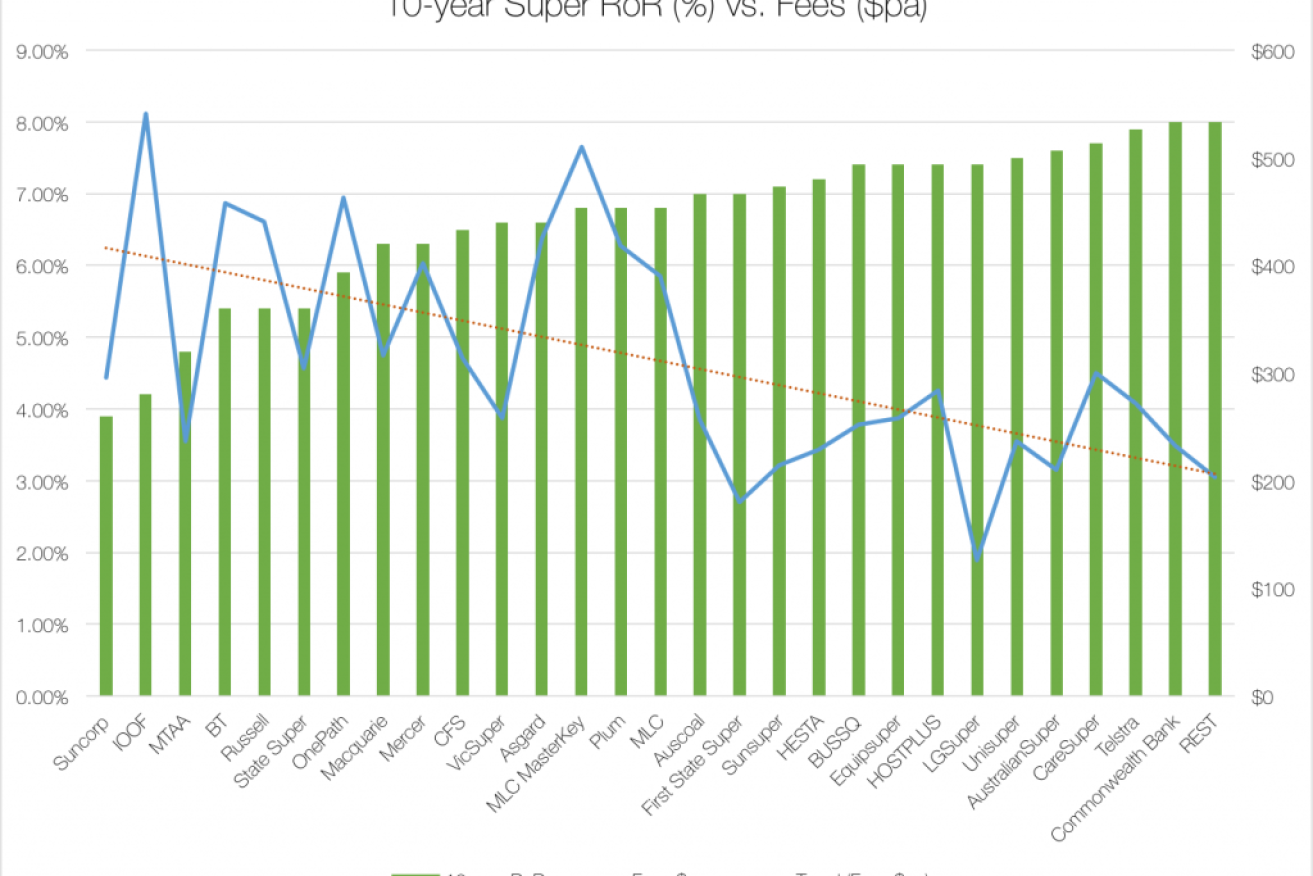How to choose a super fund: it’s a long-term game


Pocketbook
When it comes to superannuation, it can be tempting to go with the fund that has the highest returns at the time, but new research shows it’s long-term performance that counts.
The performance of funds varies wildly from year to year, according to new research by personal finance app Pocketbook, making it important to consider the average returns of funds over a period of time.
• Mortgage vs super: which should you pay first?
• How far will the Abbott government go on super changes?
While we’re always told to choose our super fund carefully, the research found a whopping $550,000 difference in returns between the best- and worst-performing funds over a 30-year period.
The research analysed the fees, fund type and rate of return of 39 of the biggest super funds in Australia over a 10-year period, and found that high fees don’t necessarily mean higher returns.
Long-term performance is key
In 2013, the best-performing fund IOOF Portfolio Service offered a return of 13.8 per cent, but in 2012 it had a dismal return of -1.3 per cent.
Looking at performance over 10 years, Pocketbook found that some funds like Suncorp only averaged a return of 3.9 per cent.
That’s less than inflation.
By comparison, the Retail Employee’s Superannuation Trust (REST) averaged a return of eight per cent over the past decade.
According to the report, a person earning the average Australian income of $75,000 a year could retire with a superannuation balance of $1 million for choosing REST, or $450,000 with Suncorp.

The fund you choose could see your superannuation double in value. Image: Pocketbook
High fees don’t mean high returns
When shopping around for a new fund, it’s important not to take a ‘you-get-what-you-pay-for’ approach, with the research showing high fees don’t mean high returns.
According to the data, the funds with the lowest fees were actually the best performing.
Funds which charged higher-end fees of around seven to eight per cent were also some of the worst performing.
“What this shows is that the funds with the greatest return, the ones that are actually going to make you the most money over an investment lifetime, are also the ones with the lowest fees,” said the report.

The orange trend line shows lower-fund fees perform the best. Image: Pocketbook
The report found industry funds were far outpacing retail funds when it came to rate of return to Australian employees, while also charging smaller fees.
Looking at the best-performing funds according to rate of return over 10 years, industry funds made up 70 per cent of the top 10.
Retail funds were found to be the least competitive in the study.
“Industry and corporate funds seem to be the way to go in the current economic climate,” said the report.
“This will probably change over time as the economy changes, but from our analysis of the last 10 years, industry funds are far outpacing retail funds in the current market.”

Industry funds were found to be the best performing over 10 years of data. Image: Pocketbook








